GE JVM1339, JVM1331, JVM1330, JVM1340, JVM1341 User Manual

850 Watts |
900 Watts |
Models: JVM1330 |
JVM1339 |
JVM1331 |
JVM1340 |
|
JVM1341 |
SpacemakerXL Microwave Oven
Owner’s Manual
|
Important Safety Information |
|
2 |
|
Precautions to Avoid Possible Exposure |
|
|
|
to Excessive Microwave Energy |
2 |
|
|
Special Notes About Microwaving |
6 |
|
|
Operating Instructions |
|
11 |
|
Features of Your Microwave |
11 |
|
|
The Controls on Your Microwave |
12 |
|
|
Time Cooking |
15 |
|
|
Temperature Cooking |
21 |
|
|
Automatic Cooking |
25 |
|
|
Other Features |
30 |
|
|
|
|
Helpful Information |
|
|
35 |
|
|
|
Oven Shelf (on some models) |
|
35 |
|
|
|
|||||
|
|
|
Care and Cleaning |
|
38 |
|
|
|
|
|
|
||
|
|
|
|
|
||
|
|
|
If Something Goes Wrong |
|
43 |
|
|
|
|
Before You Call For Service |
|
43 |
|
|
|
|
|
|
||
|
|
|
GE Service Numbers |
|
46 |
|
|
|
|
Warranty |
Back Cover |
||
GE Answer Center® 800.626.2000
GE Appliances
49-40004 164D3370P005
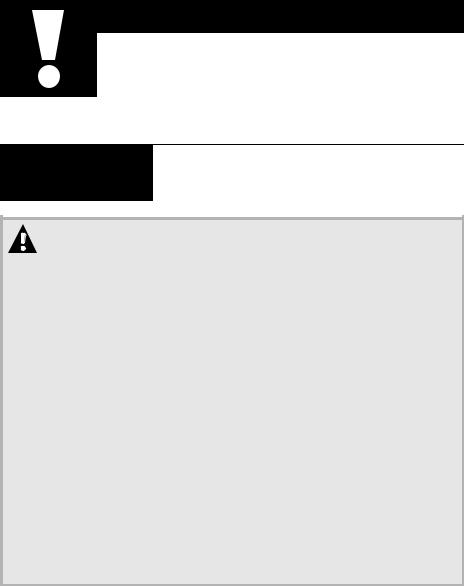
IMPORTANT SAFETY INFORMATION
READ ALL SAFETY INFORMATION BEFORE USING
FOR YOUR
SAFETY
PRECAUTIONS TO AVOID POSSIBLE EXPOSURE TO EXCESSIVE MICROWAVE ENERGY
For your safety the information in this manual must be followed to minimize the risk of fire or explosion or to prevent property damage, personal injury or loss of life.
Do Not Attempt to operate this oven with the door open since open-door operation can result in harmful exposure to microwave energy. It is important not to defeat or tamper with the safety interlocks.
Do Not Place any object between the oven front face and the door or allow soil or cleaner residue to accumulate on sealing surfaces.
Do Not Operate the oven if it is damaged. It is particularly important that the oven door close properly and that there is no damage to the:
1door (bent)
2hinges and latches (broken or loosened)
3door seals and sealing surfaces.
The Oven Should Not
be adjusted or repaired by anyone except properly qualified service personnel.
2
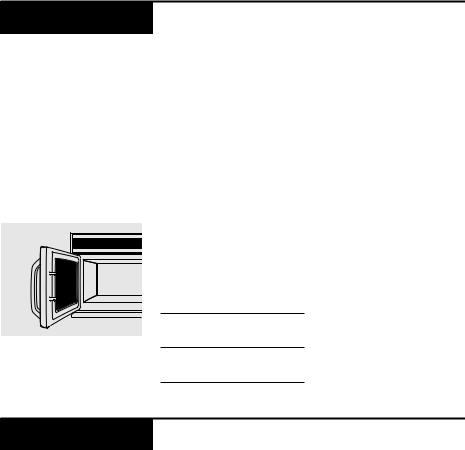
Welcome
Welcome to the GE family. We’re proud of our quality products and we believe in dependable service.
You’ll see it in this easy-to- use manual and you’ll hear it in the friendly voices of our consumer service department.
Best of all, you’ll experience these values each time you use your microwave. That’s important, because your new microwave will be part of your family for a long time.
Start Here!…Before using your Microwave
Write down the model and serial numbers here. They are on a label inside the oven.
Model number
Serial number
Date of purchase
Staple your receipt to the inside back cover of this manual. You will need it to obtain service under warranty.
Need Help?
Help us help you
800.626.2000
Before you call for service, there are a few things you can do to help us serve you better.
Read this manual.
It contains instructions to help you use and maintain your microwave properly.
If you received a damaged oven...immediately contact the dealer (or builder) that sold you the oven.
Save time and money.
Check the section titled “If Something Goes Wrong” before calling. This section helps you solve common problems that might occur.
If you do need service,
you can relax knowing help is only a phone call away. A list of toll-free customer service numbers is included in the back of this book. Or call the
GE Answer Center® at 800.626.2000, 24 hours a day, 7 days a week.
3
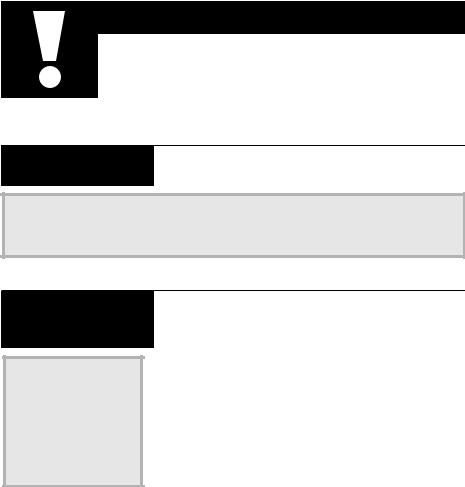
IMPORTANT SAFETY INFORMATION
READ ALL SAFETY INFORMATION BEFORE USING
 WARNING
WARNING
To reduce the risk of fire, burns, electric shock, injury to persons, or exposure to excessive microwave energy when using your appliance, follow basic precautions, including the following sections.
SAFETY PRECAUTIONS
This microwave oven is UL listed for installation over electric and gas ranges.
This microwave oven is not approved or tested for marine use.
4
•Read and follow the specific “Precautions to Avoid Possible Exposure to Excessive Microwave Energy” on page 2.
•This appliance must be grounded. Connect only to properly grounded outlet. See Grounding Instructions section on page 10.
•Do not mount this appliance over a sink.
•Install or locate this appliance only in accordance with the provided Installation Instructions.
•This over-the-range oven was designed for use over ranges no wider than 42 inches. It may be installed over both gas and electric cooking equipment.
•Do not operate this appliance if it has a damaged power cord or plug, if it is not working properly, or if it has been damaged or dropped.
•Do not cover or block any openings on the appliance.
•Use this appliance only for its intended use as described in this guide. Do not use corrosive chemicals or vapors in this appliance. This microwave oven is specifically designed to heat, dry or cook food, and is not intended for laboratory or industrial use.

•Do not store this appliance outdoors. Do not use this product near water—for example, in a wet basement, near a swimming pool or near a sink.
•Keep power cord away from heated surfaces.
•Do not immerse power cord or plug in water.
•To reduce the risk of fire in the oven cavity:
—Do not overcook food. Carefully attend appliance if paper, plastic or other combustible materials are placed inside the oven while cooking.
—Remove wire twist-ties and metal handles from paper or plastic containers before placing them in the oven.
—Do not use the oven for storage purposes. Do not leave paper products, cooking utensils or food in the oven when not in use.
—If materials inside oven should ignite, keep the oven door closed, turn the oven off and disconnect the power cord, or shut off power at the fuse or circuit breaker panel. If the door is opened, the fire may spread.
•See door surface cleaning instructions in the Care and Cleaning section(s) of this guide.
•This appliance should be serviced only by qualified service personnel. Contact nearest authorized service facility for examination, repair or adjustment.
•As with any appliance, close supervision is necessary when used by children.
SAVE THESE INSTRUCTIONS
5
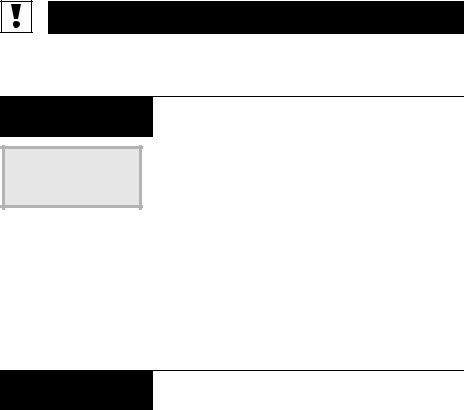
IMPORTANT SAFETY INFORMATION
SPECIAL NOTES ABOUT MICROWAVING
ARCING
If you see arcing, press the CLEAR/OFF pad and correct the problem.
Arcing is the microwave term for sparks in the oven. Arcing is caused by:
•The temperature probe in the microwave but not inserted in the food.
•The metal shelf not installed correctly so it touches the microwave wall.
•Metal or foil touching the side of the oven.
•Foil not molded to food (upturned edges act like antennas).
•Metal, such as twist-ties, poultry pins, or goldrimmed dishes, in the microwave.
•Recycled paper towels containing small metal pieces being used in the microwave.
FOODS
6
•Do not pop popcorn in your microwave oven unless in a special microwave popcorn accessory or unless you use popcorn labeled for use in microwave ovens.
•Some products such as whole eggs and sealed containers—for example, closed jars—will explode and should not be heated in this microwave oven. Such use of the microwave oven could result in injury.
•Do not boil eggs in a microwave oven. Pressure will build up inside egg yolk and will cause it to burst, possibly resulting in injury.
•Operating the microwave with no food inside for more than a minute or two may cause damage to the oven and could start a fire. It increases the heat around the magnetron and can shorten the life of the oven.
•Foods with unbroken outer “skin” such as potatoes, hot dogs, sausages, tomatoes, apples, chicken livers and other giblets, and egg yolks should be pierced to allow steam
to escape during cooking.

SAFETY
FACT
SUPERHEATED WATER
Microwaved water and other liquids do not always bubble when they reach the boiling point. They can actually get superheated and not bubble at all.
Superheated liquid will bubble up out of the cup when it is moved or when something like a spoon or tea bag is put into it.
To prevent this from happening and causing injury, do not heat any liquid for more than 2 minutes per cup. After heating, let the cup stand in the microwave for 30 seconds before moving it or putting anything into it.
•Avoid heating baby food in glass jars, even with the lid off. Make sure all infant food is thoroughly cooked. Stir food to distribute the heat evenly. Be careful to prevent scalding when warming formula or breast milk. The container may feel cooler than the milk really is. Always test the milk before feeding the baby.
•Spontaneous boiling— Under certain special circumstances, liquids may start to boil during or shortly after removal from the microwave oven. To prevent burns from splashing liquid, we recommend the following: before removing the container from the oven, allow the container to stand in the oven for 30 to 40 seconds after the oven has shut off. Do not boil liquids in narrownecked containers such as soft drink bottles, wine flasks and especially narrow-necked coffee cups. Even if the container is opened, excessive steam can build up and cause it to burst or overflow.
•Don’t defrost frozen beverages in narrownecked bottles (especially carbonated beverages). Even if the container is opened, pressure can build up. This can cause the container to burst, possibly resulting in injury.
•Hot foods and steam can cause burns. Be careful when opening any containers of hot food, including popcorn bags, cooking pouches and boxes. To prevent possible injury, direct steam away from hands and face.
•Do not overcook potatoes. They could dehydrate and catch fire, causing damage to your oven.
•When cooking pork, follow the directions exactly and always cook the meat to an internal temperature of at least 170°F. This assures that, in the remote possibility that trichina may be present in the meat, it will be killed and meat will be safe to eat.
7

IMPORTANT SAFETY INFORMATION
SPECIAL NOTES ABOUT MICROWAVING
MICROWAVE-
SAFE
COOKWARE
Make sure all cookware used in your microwave oven is suitable for microwaving. Most glass casseroles, cooking dishes, measuring cups, custard cups, pottery or china dinnerware which does not have metallic trim or glaze with a metallic sheen can be used. Some cookware is labeled “suitable for microwaving.”
How to test for a microwavesafe dish.
•If you are not sure if a dish is microwave-safe, use this test: Place in the oven both the dish you are testing and a glass measuring cup filled with 1 cup of water—set the measuring cup either in or next to the dish. Microwave 1 minute at high. If the dish heats, it should not be used for microwaving.
8
If the dish remains cool and only the water in the cup heats, then the dish is microwave-safe.
•If you use a meat thermometer while cooking, make sure it is safe for use in microwave ovens.
•Do not use recycled paper products. Recycled paper towels, napkins and waxed paper can contain metal flecks which may cause arcing or ignite. Paper products containing nylon or nylon filaments should be avoided, as they may also ignite.
•Some styrofoam trays (like those that meat is packaged on) have a thin strip of metal embedded in the bottom. When microwaved, the metal can burn the floor of the oven or ignite a paper towel.
•Do not use the microwave to dry newspapers.
•Not all plastic wrap is suitable for use in microwave ovens. Check the package for proper use.
•Paper towels, waxed paper and plastic wrap can be used to cover dishes in order to retain moisture and prevent spattering. Be sure to vent plastic wrap so steam can escape.
•Cookware may become hot because of heat transferred from the heated food. Pot holders may be needed to handle the cookware.
•“Boilable” cooking pouches and tightly closed plastic bags should be slit, pierced or vented as directed by package. If they are not, plastic could burst during or immediately after cooking, possibly resulting in injury. Also, plastic storage containers should be at least partially uncovered because they form a tight seal. When cooking with containers tightly covered with plastic wrap, remove covering carefully and direct steam away from hands and face.

•Use foil only as directed in this guide. TV dinners
may be microwaved in foil trays less than 3/4″
high; remove the top foil cover and return the tray to the box. When using foil in the microwave oven, keep the foil at least 1 inch away from the sides of the oven.
•Plastic cookware—Plastic cookware designed for microwave cooking is very useful, but should be used carefully. Even microwavesafe plastic may not be as tolerant of overcooking conditions as are glass or ceramic materials and may soften or char if subjected to short periods of overcooking. In longer exposures to overcooking, the food and cookware could ignite.
Follow these guidelines:
1Use microwave-safe plastics only and use them in strict compliance with the cookware manufacturer’s recommendations.
2Do not microwave empty containers.
3Do not permit children to use plastic cookware without complete supervision.
THE VENT
FAN
The fan will operate automatically under certain conditions (see Automatic Fan feature). Take care to prevent the starting and spreading of accidental cooking fires while the vent fan is in use.
•Clean the underside of the microwave often. Do not allow grease to build up on the microwave or the fan filters.
•In the event of a grease fire on the surface units below the microwave oven, smother a flaming pan on the surface unit by covering the pan completely with a lid, a cookie sheet or a flat tray.
•Use care when cleaning the vent fan filters. Corrosive cleaning agents, such as lye-based oven cleaners, may damage the filters.
•When flaming foods under the microwave, turn the vent fan off. The fan, if operating, may spread the flame.
•Never leave surface units beneath your microwave oven unattended at high heat settings. Boilovers cause smoking and greasy spillovers that may ignite and spread if the microwave vent fan is operating. To minimize automatic fan operation, use adequate sized cookware and use high heat on surface units only when necessary.
9
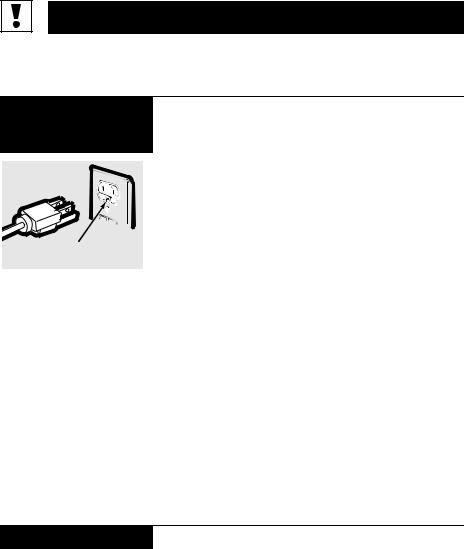
IMPORTANT SAFETY INFORMATION
GROUNDING INSTRUCTIONS/OPTIONAL KITS
GROUNDING INSTRUCTIONS
Ensure proper ground exists before use.
 WARNING
WARNING
Improper use of the grounding plug can result in a risk of electric shock.
This appliance must be grounded. In the event of an electrical short circuit, grounding reduces the risk of electric shock by providing an escape wire for the electric current.
This appliance is equipped with a power cord having a grounding wire with a grounding plug. The plug must be plugged into an outlet that is properly installed and grounded.
Consult a qualified electrician or service technician if the grounding instructions are not completely understood, or if doubt exists as to whether the appliance is properly grounded.
If the outlet is a standard 2-prong wall outlet, it is your personal responsibility and obligation to have it replaced with a properly grounded 3-prong wall outlet.
Do not under any circumstances cut or remove the third (ground) prong from the power cord.
Do not use an adapter plug with this appliance.
Do not use an extension cord with this appliance. If the power cord is too short, have a qualified electrician or service technician install an outlet near the appliance.
For best operation, plug this appliance into its own electrical outlet to prevent flickering of lights, blowing of fuse or tripping of circuit breaker.
Optional Kits
Filler Panel Kits
JX40WH—White
JX41—Black
JX40AL—Almond
When replacing a 36″ or 42″ range hood, filler panel kits fill in the additional width to provide a custom built-in appearance.
10
For installation between cabinets only; not for end- of-cabinet installation. Each kit contains two 3″-wide filler panels. Two kits are needed for a 42″ opening.
Filter Kits
JX81A—Recirculating
Charcoal Filter Kit
Filter kits are used when
the microwave oven cannot
be vented to the outside.
Decorative Panel Kit
JX22SS—Stainless Steel
When replacing a Hi/Low range, the decorative panel kit fills in the area between the microwave and the range left by the Hi/Low model.
Available at extra cost from your GE supplier.
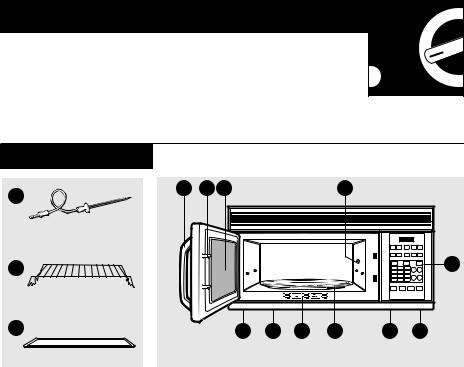
Operating Instructions
Features of Your Microwave
(Throughout this manual, features and appearance may vary from your model.)
1
2
3
1Temperature Probe (on some models). Use with Temp Cook and Roast functions only.
2Shelf (on some models).
Lets you microwave several foods at once. Food microwaves best when placed directly on the oven floor or turntable.
3Glass Cooking Tray.
On models without a turntable.
4Door Handle. Pull to open the door. The door must be securely latched for the microwave to operate.
4 |
5 |
6 |
|
|
|
7 |
|
|
|
|
|
|
|
|
8 |
|
|
9 |
10 |
12 |
11 |
10 |
9 |
Wattage: Turntable Models—900 Watts Non-Turntable Models—850 Watts
5Door Latches.
6Window with Metal Shield. Screen allows cooking to be viewed while keeping microwaves confined in the oven.
7Receptacle for Temperature Probe (on some models).
Probe must be securely inserted into the receptacle before the oven will Temp Cook or Roast.
8Touch Control Panel Display (panel layout will vary by model).
9Cooktop Lights.
10Grease Filters.
11Removable Turntable (on some models).
Turntable and support must be in place when using the oven. The turntable may be removed for cleaning.
12 Convenience Guide.
NOTE: Rating plate, oven vent(s) and oven light are located on the inside walls of the microwave oven.
11
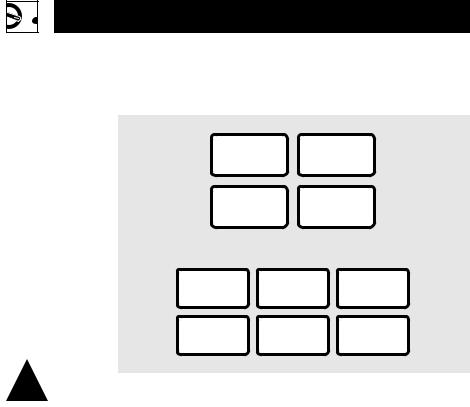
Quick Start
The Controls on Your Microwave Oven
(Throughout this manual, features and appearance may vary from your model.)
You can |
|
|
microwave by |
|
|
time, temperature, |
MICRO |
DEFROST |
or with the |
||
convenience |
COOK I & II |
AUTO / TIME |
features. |
|
|
|
ADD |
POWER |
|
30 SEC |
LEVEL |
|
|
1-10 |
|
1 |
|
2 |
3 |
|
EXPRESS COOK |
EXPRESS COOK |
EXPRESS COOK |
|
|
4 |
|
5 |
6 |
|
EXPRESS COOK |
EXPRESS COOK |
EXPRESS COOK |
|
1 |
Time Features |
|
|
|
|
|
|
||
Time Cooking |
|
|
||
|
|
|
|
|
Press |
|
|
Enter |
|
MICRO COOK I & II (Press once or twice) |
|
Amount of cooking time. |
||
DEFROST AUTO/TIME (Press twice) |
|
Amount of defrosting time. |
||
EXPRESS COOK |
|
Starts immediately! |
|
|
ADD 30 SEC |
|
Starts immediately! |
|
|
POWER LEVEL |
|
Power level 1–10. |
|
|
12
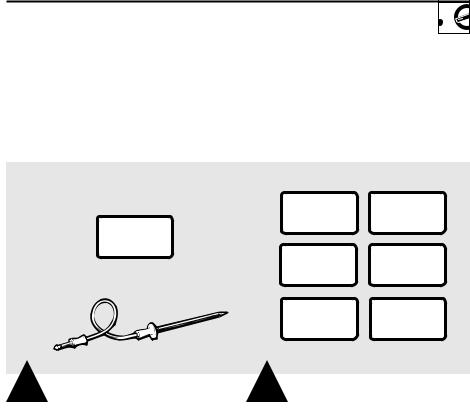
HELP |
GUIDE ON MICROWAVE |
GUIDES IN BOOK |
Press this pad and any |
Before you begin, check |
• Cooking |
feature pad for usage |
the guide located on the |
• Time Defrost |
instructions and tips. |
inside front of the oven |
• Roasting |
|
when you open the door. |
• Simmer |
|
|
• Reheat |
|
|
• Snacks |
|
|
|
BEVERAGE REHEAT
TEMP COOK /
ROAST
PROBE
SNACKS POPCORN
COOK |
DEFROST |
|
AUTO / TIME |
||
|
2 |
Temperature Features |
|
|
||
Probe Cooking |
|
|
|
|
|
Press |
|
Enter |
|
|
|
TEMP COOK/ROAST |
Desired food |
|
(Press once) |
temperature. |
|
TEMP COOK/ROAST |
Medium |
|
(Press twice) |
automatically |
|
|
|
selected. |
TEMP COOK/ROAST |
Well |
|
(Press three times) |
automatically |
|
|
|
selected. |
TEMP COOK/ROAST |
Simmer |
|
(Press four times) |
automatically |
|
|
|
selected. |
3 |
Convenience Features |
||
|
|||
|
|
|
|
Press |
|
Enter |
Option |
POPCORN |
Starts |
more/less |
|
Press once |
immediately! |
time |
|
3.5 oz. |
|
||
Press twice |
3.0 oz. |
|
|
Press 3 times |
1.75 oz. |
|
|
BEVERAGE |
Starts |
1–3 servings |
|
|
|
immediately! |
|
REHEAT |
|
Food type |
1–3 servings |
|
|
1–6 |
|
SNACKS |
|
Snack type |
number/ |
|
|
1–6 |
weight |
COOK |
|
Food type |
|
|
|
1–9 + weight |
|
DEFROST |
Food weight |
|
|
AUTO/TIME |
|
|
|
(Press once) |
|
|
|
13
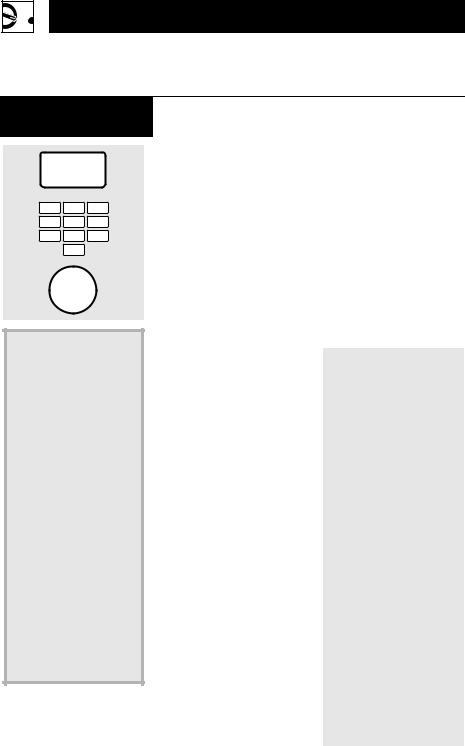
Operating Instructions
Changing Power
Levels
POWER
LEVEL
1-10
1 |
2 |
3 |
EXPRESS COOK |
EXPRESS COOK |
EXPRESS COOK |
4 |
5 |
6 |
EXPRESS COOK |
EXPRESS COOK |
EXPRESS COOK |
7 |
8 |
9 |
|
0 |
|
|
DISPLAY ON/OFF |
|
START
How to Change the Power Level
The power level may be entered or changed immediately after entering the feature time for MICRO COOK, TIME DEFROST or EXPRESS COOK. The power level may also be changed during time countdown.
1Press MICRO COOK I & II or select Time Defrost.
2Enter cooking or defrosting time.
3Press POWER LEVEL.
4Select desired power level 1–10.
5Press START.
14
Variable power levels add flexibility to microwave cooking. The power levels on the microwave oven can be compared to the surface units on a range. High (power level 10) or full power is the fastest way to cook and gives you 100% power. Each power level gives you microwave energy a certain percent of the time. Power level 7 is microwave energy 70% of the time. Power level 3 is energy 30% of the time.
A high setting (10) will cook faster but food may need more frequent stirring, rotating or turning over. Most cooking will be done on High (power level 10). A lower setting will cook more evenly and need less stirring or rotating of the food.
Some foods may have better flavor, texture or appearance if one of the lower settings is used. Use a lower power level when cooking foods that have a tendency to boil over, such as scalloped potatoes.
Rest periods (when the microwave energy cycles off) give time for the food
to “equalize” or transfer heat to the inside of the food. An example of this is shown with power level 3— the defrost cycle. If microwave energy did not cycle off, the outside of the food would cook before the inside was defrosted.
Here are some examples of uses for various power levels:
Power Level Best Uses
High 10 Fish, bacon, vegetables, boiling liquids.
Med-High 7 Gentle cooking of meat and poultry; baking casseroles and reheating.
Medium 5 Slow cooking and tenderizing such as stews and less tender cuts of meat.
Low 2 or 3 Defrosting without cooking; simmering; delicate sauces.
Warm 1 Keeping food warm without overcooking; softening butter.
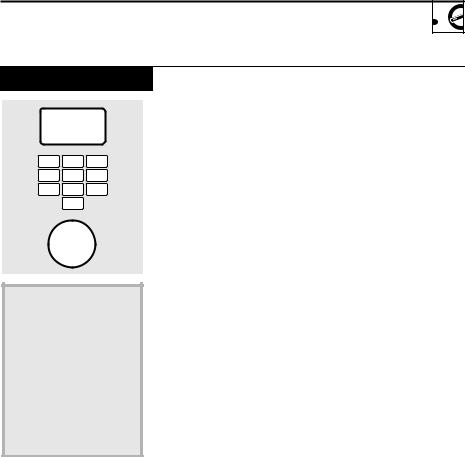
Time Features
Micro Cook
MICRO
COOK I & II
1 |
2 |
3 |
EXPRESS COOK |
EXPRESS COOK |
EXPRESS COOK |
4 |
5 |
6 |
EXPRESS COOK |
EXPRESS COOK |
EXPRESS COOK |
7 |
8 |
9 |
|
0 |
|
|
DISPLAY ON/OFF |
|
START
1Press MICRO COOK I & II.
2Enter cooking time.
3Change power level if you don’t want full power. (Press POWER
LEVEL. Select a desired power level 1–10.)
4Press START.
Micro Cook I
Allows you to microwave for any time up to 99 minutes and 99 seconds.
Power level 10 (High) is automatically set, but you may change it for more flexibility.
You may open the door during Micro Cook to check the food. Close the door and press START to resume cooking.
Micro Cook II
Lets you change power levels automatically during cooking. Here’s how to do it:
1Press MICRO COOK I & II.
2Enter the first cook time.
3Change the power level if you don’t want full power. (Press POWER LEVEL. Select a desired power level 1–10.)
4Press MICRO COOK I & II again.
5Enter the second cook time.
6Change the power level if you don’t want full power. (Press POWER LEVEL. Select a power level 1–10.)
7Press START.
At the end of Micro Cook I, Micro Cook II counts down.
15
